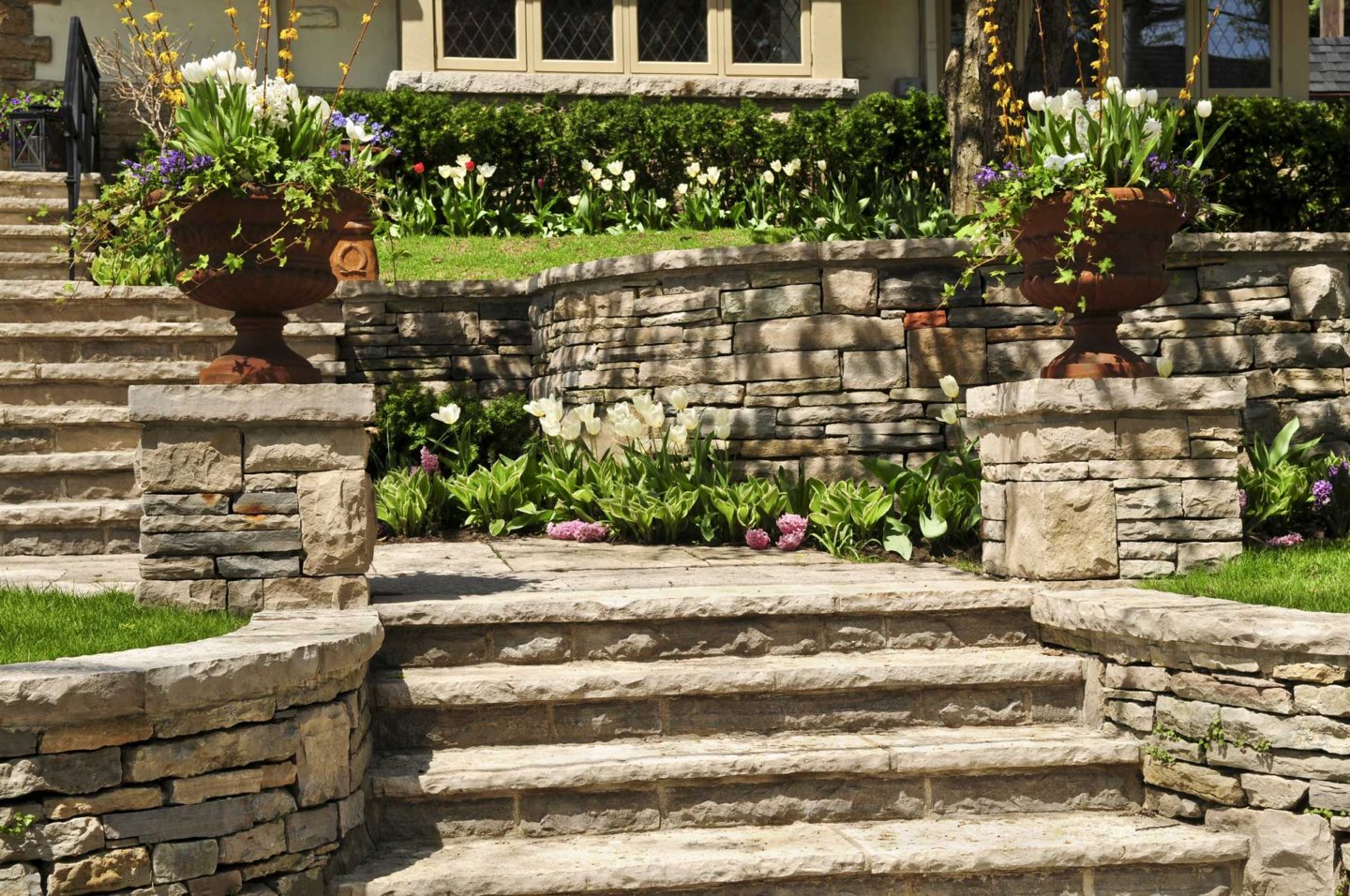Add Steps To Your Retaining Walls
Retaining walls keep your soil from eroding, make your landscape even, and add beautiful decorative elements to your outdoor spaces. Adding steps to your retaining walls will increase their usefulness.
Why You Need Stairs In Your Retaining Walls
Stairs give your walls a finished look. If you have a steeply sloped lawn that requires many retaining walls, a long, curving stairway creates an inviting walkway. Instead of an intimidating series of walls, you’ll have a charming stone path that meanders up the hill to your house or another part of the yard.
They enhance outdoor safety. Stone stairs in your retaining walls mean you and your guests don’t have to walk through wet, muddy grass to get from one part of the yard to another. Stone’s rough surface makes it ideal for safer walking on wet days or around water features. Stone is far more durable than wood or other stair materials.
Your yard is more usable with stairs. Instead of blocking access to parts of your yard, your retaining wall stairs help you make the most of your yard and get more enjoyment out of it.
Know Your Stair Parts
When you’re designing stairways, it’s helpful to know the basics of stair design. Here are the basic stair parts you should know.
• Landing: The top area where you arrive at the beginning or end of the stairway. A landing is a wide area that connects the stairs to the rest of a home or an outdoor space.
• Tread: The flat part of the stair where you place your foot. The size of a tread is often called the run size.
• Riser: The part that holds up the tread. Risers vary in height and decide how tall the step is.
• Stringers: The inner and outer panels that hold the risers and treads in place.
Make Walking Easy
The best stairways allow you to walk easily up the hilly parts of your lawn. They aren’t too steep, and they match the natural grade of your incline. How do you create stairs like this? The steepness of stairs is determined by the size of the risers and the placement of the treads. Follow these pointers.
• On sharp inclines, use tall risers of 8 to 12 inches with smaller treads. This keeps the stairs compact and tight to allow quick, easy scaling of the incline.
• On gentle inclines, use short risers and wide treads to create large stairs that guide you gradually up the slope.
• If your stairway is exceptionally long, add landings at intervals. They soften the look of a long stairway and make it easier to climb.
Make a Plan
Before you start, make a plan that includes where you’d like to place your stairs and which materials you prefer. Decide if you want straight stairs, curved stairs, or a combination of both. Straight stairways work well on shorter walls, and curved stairways are ideal for tall walls.
Building stairs into your retaining walls is a complicated construction project. Before you begin, talk to an expert who understands the importance of the proper excavation, installation, and engineering related to these projects.
Talk to the Stone Experts
At Capital Masonry, we have the skills and experience to build retaining walls and stairs. We’ll help you plan your stairway construction and create a yard you’ll enjoy for many years. If you want to enhance your outdoor space with steps, call Capital Masonry today.
